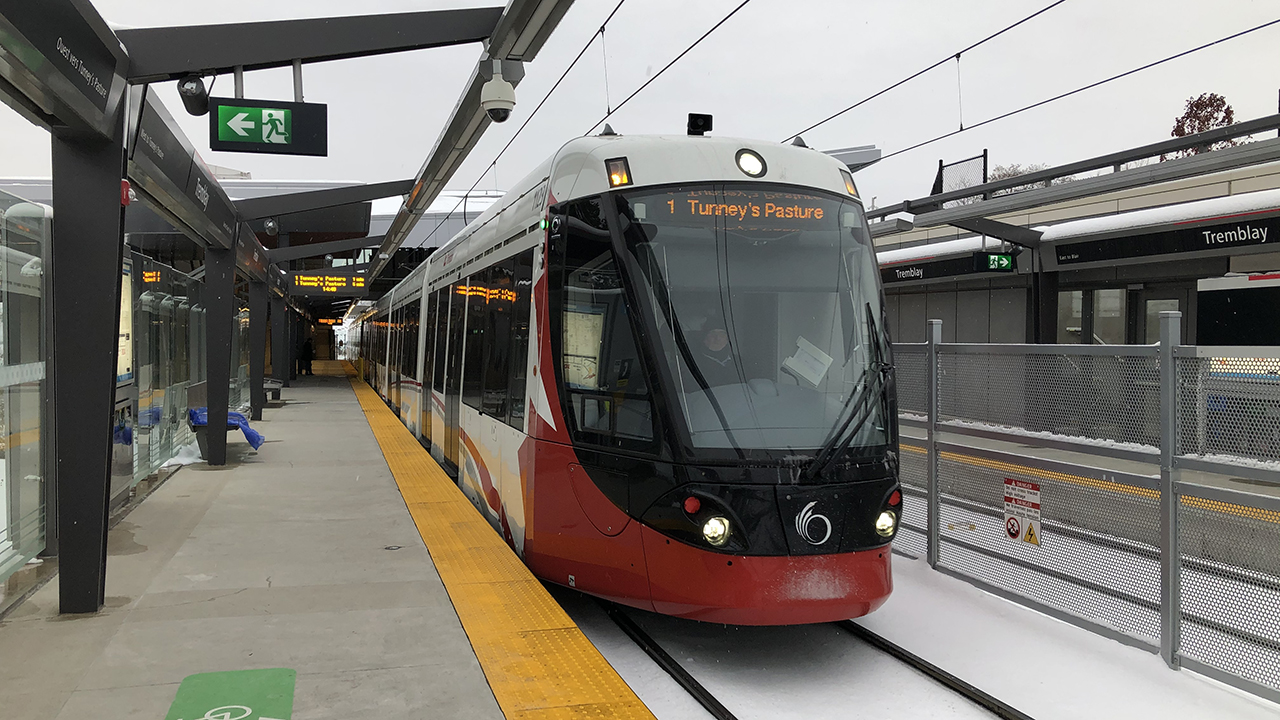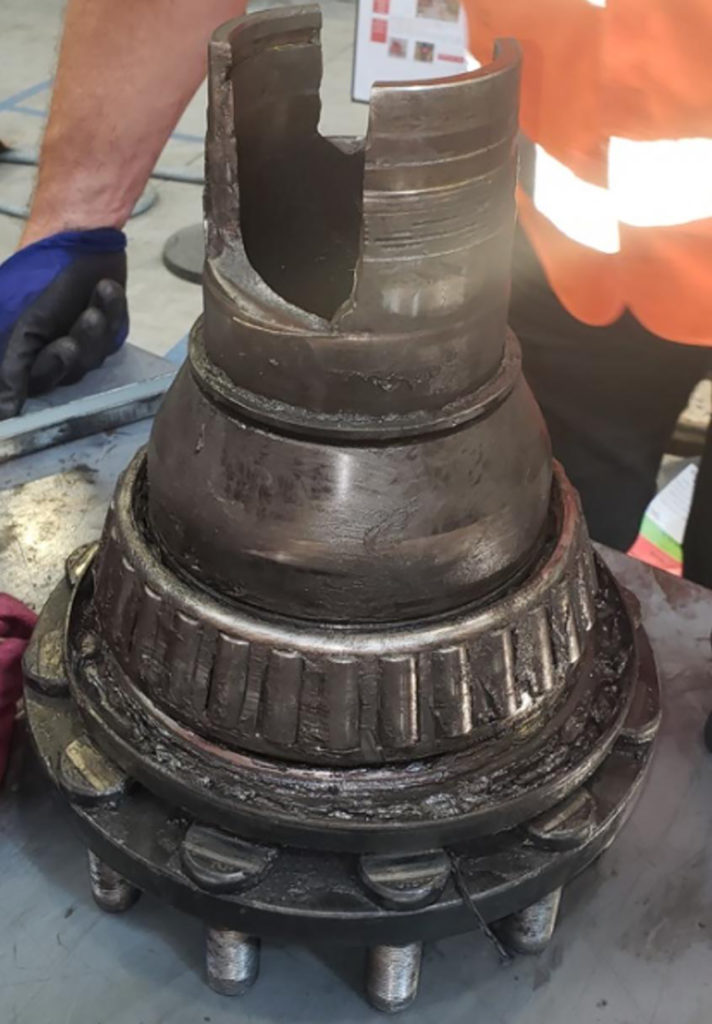
TSB: Ottawa Confederation Line Remains Hazardous (Updated Feb. 22)
Written by David Thomas, Canadian Contributing Editor
OC Transpo Confederation Line. William C. Vantuono photo
A second inquiry into Ottawa’s problematic light rail system, this time by Canada’s Transportation Safety Board, has warned that the city’s new Confederation Line is a safety risk and should be substantially re-engineered.
The first inquiry, the “Ottawa LRT Independent Review Report,” commissioned by the City and conducted by Mott MacDonald Canada, was a review of the Confederation Line Stage 1 asset conditions including the vehicles, signaling, track and operations control center. The 291-page report was completed in April 2022. Though it is marked as “Confidential,” it is available on the City website, is in the public domain, and is downloadable at the end of this article.
In a Feb. 3 letter to the city (downloadable below), the TSB said the system’s Alstom Citadis Spirit LRV model, of which there are 34, “has had numerous reliability issues and experienced two serious main-track derailments since it commenced operations.” The trainsets, said the TSB missive, are not sufficiently robust to resist the greater accelerations and passenger loads required to satisfy city specifications and will “continue to pose a risk to safety until the issues are resolved.” Specifically, the TSB said, bogies and wheelsets are not up to the increased torque of the more powerful motors installed to meet city specs.
The TSB has no authority to shut down the system, and Ottawa Light Rail Transit (OLRT) continues to operate the trains despite the now-confirmed risk to passenger safety. In one incident still unexplained by the continuing TSB investigation, a wheel simply fell off its axle.

Light rail vehicle 1127 failed axle hub. TSB photo
In an earlier Provincial inquiry reported last November, Judge William Hourigan urged “modifying the wheel profile to better sustain the transversal forces coming from the track.”
The conclusion of the two investigations is that the Confederation Line is simply not fit for purpose.
Withholding of information on the part of the Rideau Transit Group (RTG, consisting of SNC Lavalin, Ellis Don and ACS Infrastructure Canada), and Jim Watson, Ottawa’s former mayor, was largely responsible for the technical failures that could have been identified and remedied had the city and the private consortium been forthcoming about known issues around design and testing, reported Judge Hourigan. There was no overall systems integrator, leading to the mismatch of rail and wheel profiles and curves too sharp for the trainsets to navigate at operational speeds, according to the judicial inquiry ordered by the Ontario government.
Vehicle supplier Alstom is not a part of Rideau Transit Group. OLRT-Constructors subcontracted with Alstom to supply the 34 Citadis Spirit LRVs. Rideau Transit Maintenance General Partnership subcontracted with Alstom to perform maintenance services for some but not all aspects of the system, including the LRVs.
Judge Hourigan blamed Watson and his staff for attempting to “control the narrative by the nondisclosure of vital information or outright misrepresentation. Worse, because the conduct was willful and deliberate, it leads to serious concerns about the good faith of senior City staff, and raises questions about where their loyalties lie. It is difficult to imagine the successful completion of any significant project while these attitudes prevail within the municipal government.”
Both P3 (public-private partnership) parties were guilty of “egregious violations of the public trust” in misrepresenting project progress, Hourigan said.
Lessons learned? Not so much.
After the judicial report’s urging that the two parties settle a bitter lawsuit over everything from construction sinkholes to non-payment of maintenance invoices, the two parties did negotiate a legal settlement—and decided not to release details publicly to the taxpayers, who must foot the multi-million-dollar bill.
Non-disclosure agreements are routine for settlements between private litigants to protect business interests. Ottawa’s solicitor thinks they are equally acceptable for public-private partnerships paid for by taxpayers. In a Feb. 9 response to a formal request for release of the legal settlement filed by Railway Age, Ottawa Solicitor David White wrote:
“The Courts have recognized that confidentiality is a very important component of the settlement process and that, in fact, it is in the public interest to protect the confidential nature of settlements. In doing so, it encourages the settlement of disputes, rather than prolonging them through litigation. In this regard, the Supreme Court of Canada, in a 2013 decision, stated that settlement is in the public interest as it saves litigants the costs of trials, and conserves judicial resources. The Court further noted that the confidential nature of settlements promotes this public interest, by allowing settlement negotiations to be more open and fruitful between the parties, when they know that the settlement will not be disclosed. Simply put, the Court recognized that settlements were an essential part of the legal system and that settlements were not likely to be achieved without confidentiality.”
The confidential settlement risks the reputation of P3s as vehicles for transit projects, generally. Judge Hourigan questioned whether such P3 structures are appropriate for large projects, when public officials do not have the capacity to manage complex multi-party contracts.
The Ontario government did not respond when asked by Railway Age whether the report of the judicial inquiry has been referred to prosecutors for potential criminal or civil actions.



